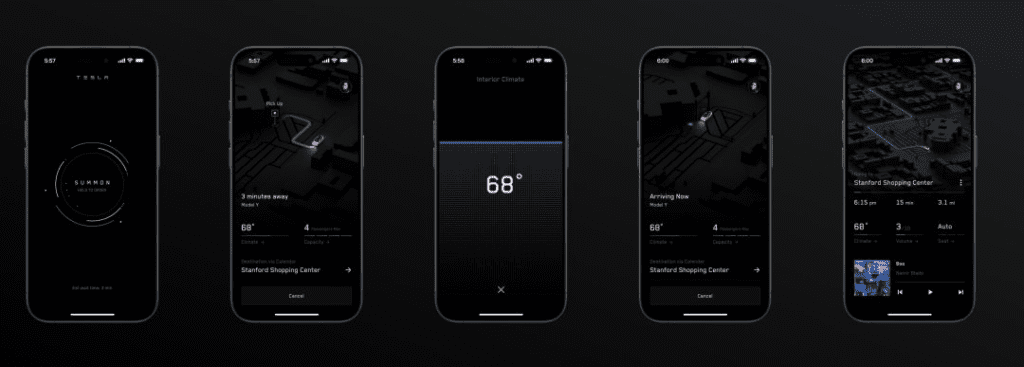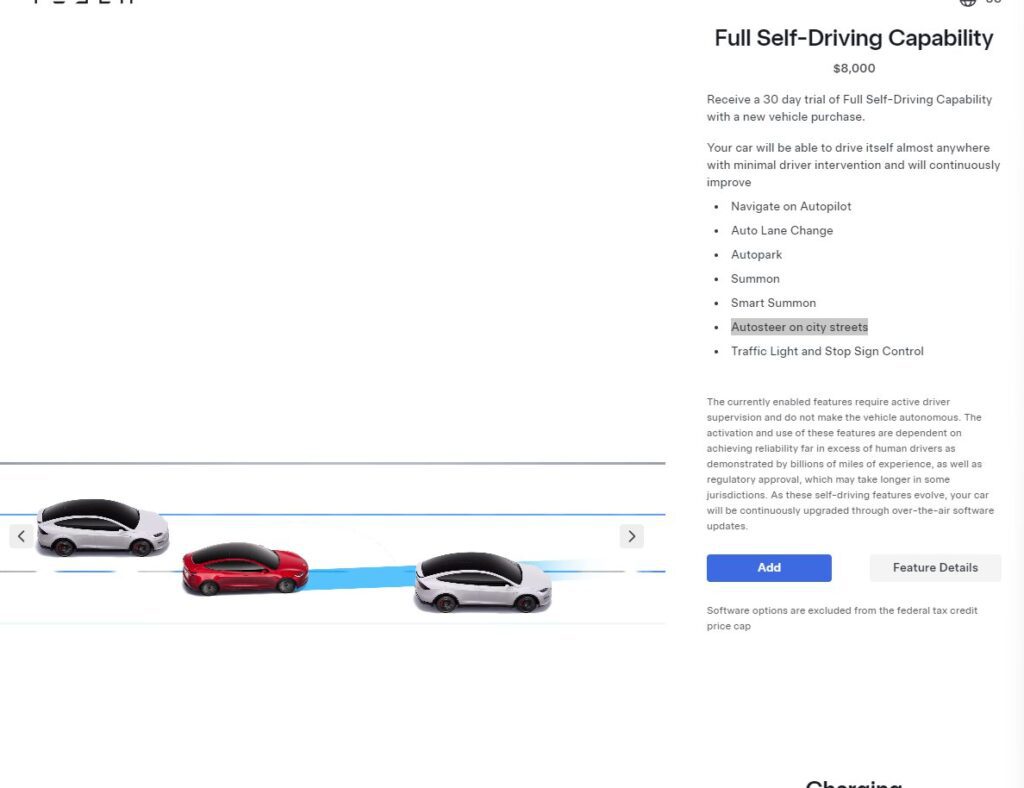Tesla’s Full Self Driving Software is in active development. Tesla are iterating its software with regular updates to improve the product’s capabilities, address issues and edge cases.
The goal has always been to advance this to the point where the car is autonomous, and we’ve heard many public statements from the CEO that the fleet will have the option to become robotaxis.
For more than 5 years, Tesla has been selling vehicles with Hardware 3 (HW3), a combination of compute and cameras that was explained as the hardware necessary to achieve this autonomous driving feature.

We’ve seen previews of a future Tesla mobile app that allows you to enrol your car in to Tesla’s Robotaxi fleet. How many owners actually go on to do that, for a chance to make revenue from their vehicle, remains an outstanding question, but we know Tesla will make their own dedicated Robotaxi that also relies on FSD being completed.
Tesla will be holding a Robotaxi announcement on October 10th, 2024 to unveil that robotaxi which will then be sent to production with the first units expected to roll off the production line sometime in 2025.
For existing owners of around 2 Million Tesla vehicles that have HW3, a subsection of these have purchase the Full Self-Driving software package. This is true of vehicles from across the globe, while those in the US and Canada can also buy it on subscription and opt-in/out month to month.


On Tesla’s website, and in your purchase agreement, Tesla committed to deliver ‘Autosteer on city streets’ which is the item in the FSD Capability that remains outstanding for those that haven’t opted into FSD Supervised, or live in international markets. Autosteer on City Streets is also known as Full Self Driving (Supervised) which is expected to become Full Self Driving (Unsupervised) in future releases, which will be effectively a robotaxi capable-piece of software.
What we seen this week is Tesla move to roll out the latest FSD V12 build to cars with HW4 first, and a statement from Musk that HW3 vehicles will take a little longer as they optimise the release for the capabilities of the compute available in HW3.
As we’ve seen with larger language models, things get a lot easier with more hardware, but over time, the performance of these models can be maintained or even improved as models get optimised.
Given the volume of impacted customers that own HW3 vehicles, there are potentially lots of angry customers that will requests refunds or file law suits, if Tesla ever says they can’t/won’t ship FSD to HW3 vehicles.
Option 1: Solve FSD with HW3
The most obvious scenario and best outcome for everyone, is that Tesla continues to iterate models to make FSD work on HW3 vehicles, we may just need to wait a little longer than HW4+ cars.
Naturally that won’t sit well with customers who feel like they invested in the company by buying a Model 3 at a time where company’s future was questionable and others that purchased at prices that mean they’re underwater and economically can’t upgrade to a HW4+ vehicle, even if they had access to a FSD transfer to the new vehicle.
If Tesla was to make a decision that making FSD work on HW3 was not possible or not economical, there are some additional scenarios that could play out.
Option 2: Refund customers
A number of Tesla customers will have purchased their vehicles and the FSD software, because they believed their vehicles could achieve a self-driving capability that would make them money.
These customers have still had the features and benefits of owning the vehicle, and 90% of the software features, so they would never be entitled to a full refund.
The price of FSD has changed over time, so the price for each customer would be different and customers have also been leveraging other aspects of the FSD functionality, even if Autosteer on city streets isn’t complete.
Some of the other FSD features (Navigate on Autopilot, Smart Summon, Traffic Light and Stop Sign Control) may still be beta, but are features they have on the vehicle, so its hard to make a case that the would be entitled for compensation.
So let’s say Tesla entertained a potential refund for the Autosteer on city streets. The owner will have seen potential revenue as part of their calculation that wouldn’t be delivered in this scenario.
Imagine you paid $10,000 for FSD, let’s imagine Tesla refunds HW3 customers 1/7th the cost, given Autosteer on city streets is one of 7 listed features oner Full Self-Driving Capability on the Tesla website.
Possible Refund
There are a lot of potential variables when it comes to calculating any potential refund, here’s one scenario, but feel free to play around with the numbers and put your assumptions in a comment below.
- Number of HW3 vehicles: ~2M
- FSD Take rate ~30%: 600,000
- FSD Cost: (up to $10k)
- 1/7th the cost of the FSD feature set: ~$1,428
- Estimated Value: 600,000 * $1,428 = $856,800,000
With these assumptions, Tesla could potentially ‘make good’ on refunding impacted customers who purchased FSD, but not without a significant impact on the business financials.


Option 3: Retrofit hardware
Tesla has already explained that a straight swap of HW3 to HW4 and above is not possible. There are physical differences in size, so there’s a significant disincentive there, what would cause a HW4b board to be developed to support a potential hardware retrofit.
Compute only
Imagine Tesla can shrink the HW4 board to fit in the physical space, it also needs to support the existing camera inputs and the connectors would make sense.
If Tesla makes a HW4b board to resolve this, millions of dollars in development is likely to be required to achieve the development and production in volume in partnership with suppliers.
It is possible that making HW3b for retrofits would reduce the capacity of HW4+ boards produced for new vehicles and could constrain the ramp of compute for dedicated robotaxis. This is a strong disincentive for Tesla to go in this direction as everything about the robotaxi is pointing at large volumes and with each potential vehicle would be missing out on future rideshare revenue.
The practical reality is that Tesla Service would need to install any retrofit hardware. Even Tesla would admit that they are resource constrained already at service centers, so adding this workload would not be welcome and attract additional costs in wages and opportunities.
Compute + cameras
If Tesla did require additional cameras quality (increase in pixel count) to match the HW4 cameras, most of the cameras are replaceable.
- The front camera array is accessible from the mirror assembly on the windshield. Once you play with this, you’ll need to recalibrate the cameras, but swapping the cameras out would also require this.
- The fender cameras on the front quarter panels and indicator assembly should be an easy upgrade.
- The b-pillar cameras are also replaceable, with the section between the front and rear windows able to be popped out to access and replace the cameras.
- The rear camera in the trunk lid is also fairly easy to access.
If the physical connection (power/data) is different between the HW3/HW4+ cameras, that means you’re either splicing cables or replacing the cable entirely.
Easily the biggest question mark is the wiring. If the wiring from the camera location, back to the computer can’t handle/support the data/power required for upgraded cameras, then the viability of a hardware retrofit won’t make sense.
The wiring harness in a car runs through trim pieces, but is generally clipped to chassis rails and replacing it would require disassembling almost all the interior and at that point this does not make sense.
If it was, again the service center costs are real and far great in this scenario.
To me, it’s clear from thinking through these scenarios, that a retrofit for Tesla vehicles with HW3 is not practical.

I would be satisfied with one free, no time limit FSD transfer from my HW3 vehicle. More value and more solution to me than a 1/7th refund, and no real cost to Tesla, plus encourages a future sale.
Please explain how 85,714 x $10K (aka $10,000) is less than $1,000,000? Looks like more the $85 million?
I would want a full refund because in 2018 I would not have purchased the FSD at all if it was not going to be delivered. I have 2 M3s with FSD BETA. YOU COULD SAY WE REPRESENT A LOT OF PRE-PAID INCOME. WHERE IS THE RETURN ON OUR INVESTMENT?